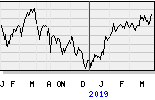
ASML Holding NV (ASML) today introduced its newest TWINSCAN(TM) system, an advanced 193-nanometer (nm) exposure system which features imaging, overlay and throughput improvements. The TWINSCAN XT:1450 is targeted for high volume manufacturing, an extension of dry ArF to sub-60-nm. It can also used by customers to support development of 32-nm node processes using double patterning techniques.
The XT:1450 is the most advanced system for dry ArF volume production. It improves value of ownership for IC manufacturers, with an increased throughput of 143 wafers-per-hour under volume manufacturing conditions. The new AERIAL-P(TM) illuminator supports high efficiency polarization which, together with increased lens aberration control and enhanced overlay performance, enables the XT:1450 to extend the limits of dry ArF to a specified resolution of 57-nm.
"The introduction of the XT:1450 is a response to our customers' demands for an ASML exposure system with very tight overlay capability, one of the key drivers for shrink," said Martin van den Brink, executive vice president marketing and technology at ASML. "Some of our leading edge customers already have products with 32-nm half pitch features on their roadmaps. Double patterning could provide the solution for an early introduction and the XT:1450 can help them prepare for that technology."
Double patterning is a resolution enhancement technique that involves splitting a dense circuit pattern into multiple, less-dense patterns. These simplified patterns are then printed sequentially on a target wafer. In between the exposures, the wafer is removed from the exposure system for additional processing. Double patterning improves the achievable resolution and enables the printing of smaller features.
ASML expects double patterning techniques to be used by customers with aggressive shrink roadmaps who apply regular patterns such as memories. It will form a bridge between current lithography technology and next-generation extreme ultraviolet (EUV) lithography. Double patterning, compared to single patterning, requires extremely tight critical dimension uniformity and overlay, which the XT:1450 delivers.
ASML expects to begin shipping the XT:1450 by mid 2007.
